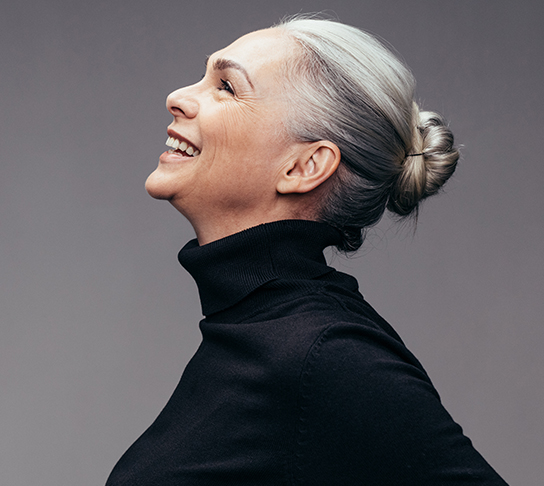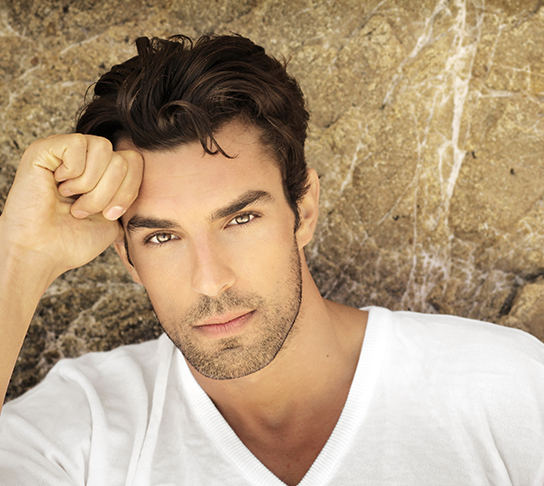Blepharoplasty (Eyelid Surgery)
Eyelid surgery: aesthetic and functional rejuvenation
Madrid | Zurich
The eyelid procedure transforms the most noticeable area of your face: the eyes. Due to constant movement, anatomical variations, and the delicate skin in this area, the aging process usually begins around the eyes. Blepharoplasty delays the signs of aging, being a fast, safe procedure with immediate results.
Depending on the patient’s needs, blepharoplasty can be performed on the upper eyelids, lower eyelids, or both (full procedure). The treatment may include removal of excess skin, fat, part of the muscle, and/or bags. Common reasons for undergoing blepharoplasty include tired-looking eyes, puffiness, bags, or difficulties when reading or working at a computer. One frequent comment after surgery is: “Why didn’t I do this sooner…?”
The specialized understanding of the three-dimensional architecture of the face, combined with Dr. Richard Fakin’s extensive experience, ensures natural and long-lasting results.
Length
45 – 100 min
Discharge
Same-day
Fit to go back to work
5 – 7 day
Fit for everyday activities
5-10 days
Anesthesia
Local or sedation
Recovery time
10 days
Which blepharoplasty technique is right for you?
Factors such as skin type, age, and anatomical dimensions are key to selecting the most appropriate eyelid lifting procedure. Blepharoplasty can remove excess skin, fat, bags, and/or wrinkles from both the upper and lower eyelids. In every form, scars remain imperceptible whether the approach is transcutaneous (external) or transconjunctival (internal).
To learn more about our blepharoplasty procedures (eyelid surgery), see our Instagram posts


How is a blepharoplasty surgery performed?
Typically performed under local anesthesia, and in some cases—especially for lower eyelid surgery—intravenous sedation is used. In all cases, recovery is very fast, allowing patients to resume their daily activities shortly after the procedure.
To learn more about our blepharoplasty procedures (eyelid surgery), see our Facebook posts.
Blepharoplasty results: longevity and additional procedures
This procedure has an extremely high success rate. Results remain intact for an estimated period of 8 to 12 years. However, it is important to note that the aging process of the skin continues, although it can be delayed through medicinal cosmetics, sun protection, and the use of advanced technology. When combined with other facial procedures, such as facial fat grafting, face and neck lifting, or rhinoplasty, blepharoplasty becomes a key element in the overall rejuvenation of the face.
To learn more about our blepharoplasty procedures (eyelid surgery), see our Instagram posts

Before and after blepharoplasty: real patient cases








Blepharoplasty: Frequently Asked Questions
What is the difference between upper and lower blepharoplasty, and how do we decide?
Upper blepharoplasty removes excess skin and sometimes fat, while lower blepharoplasty targets under-eye bags and/or skin laxity. Sometimes both are performed together. The choice depends on your anatomy, skin quality and desired look.
Does blepharoplasty change the shape of the eyes or my expression?
Dr. Fakin’s goal is to rejuvenate the eyes while respecting your identity. We place incisions in natural creases and preserve eyelid support to avoid “round eyes” or an artificial look. The aim is always a fresh and natural result.
What is recovery like after blepharoplasty?
Bruising and swelling are common in the first days and usually improve within 1–2 weeks. Most patients can return to social life in about a week. Scars mature over several months and typically become almost invisible.
Where are the blepharoplasty scars and how should they be cared for?
In upper blepharoplasty, scars are hidden in the natural crease; in lower blepharoplasty, just under the lash line or inside the eyelid (transconjunctival, leaving no external scar). At our clinic we provide a care protocol including massage, hydration and sun protection to optimize healing.
Can blepharoplasty be combined with laser, canthopexy or other techniques?
Yes. Depending on the case, we may add laser resurfacing or peels to improve skin quality, canthopexy for lateral support, or ptosis correction. The plan is always personalized to achieve stable and comprehensive rejuvenation.


